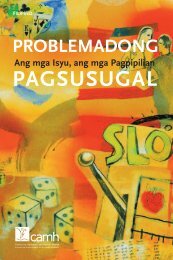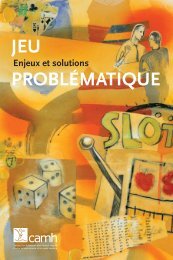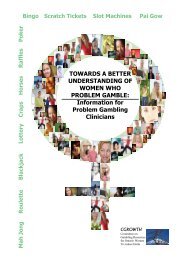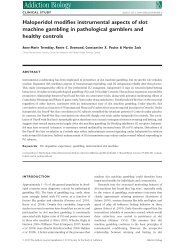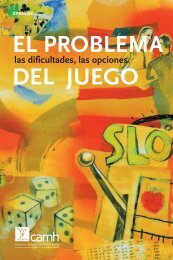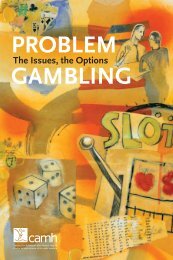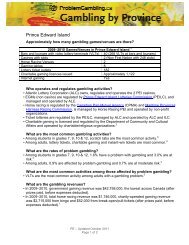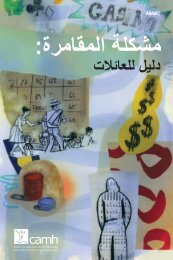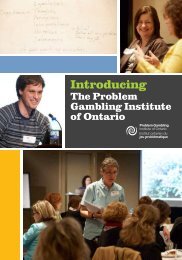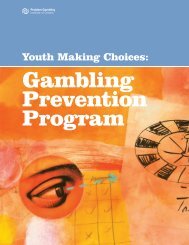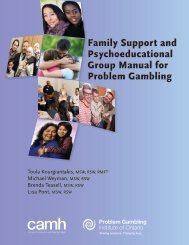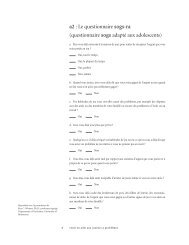Unit 3: Probability - ProblemGambling.ca
Unit 3: Probability - ProblemGambling.ca
Unit 3: Probability - ProblemGambling.ca
Create successful ePaper yourself
Turn your PDF publications into a flip-book with our unique Google optimized e-Paper software.
<strong>Unit</strong> 3: <strong>Probability</strong> Appendix B<br />
Teacher resource 3<br />
DIScuSSIon<br />
Engage the students in a discussion about the unpredictability of the outcomes of coin and<br />
dice experiments. The concept of “independence” (in other words, coins and dice do not have<br />
memories) from one trial to the next is a criti<strong>ca</strong>l learning.<br />
During the discussion teachers may wish to use an overhead of Student Resource 5:<br />
Recognition of Patterns, to emphasize that human beings naturally seek patterns where none are<br />
intended. (Reveal “V V V” and the students will likely say that these are 3 Vs. Reveal the two Vs<br />
in close proximity and they might <strong>ca</strong>ll this a W. Reveal the three rotated Vs and they will likely <strong>ca</strong>ll<br />
this a triangle. Students will likely see pattern where none is intended.)<br />
Another illusion is shown on the next page where the illusion of a triangle is so strong that it<br />
actually look brighter than white space on the rest of the page. These images illustrate how<br />
good humans are at finding patterns. This pattern recognition skill however <strong>ca</strong>n be a problem<br />
when we see patterns in random chance. Pattern recognition is a skill. The problem is that our<br />
brains are set up to find patterns; not to determine if they are real or not. If we saw a pattern of<br />
black and yellow stripes in a forest, are brain might conclude that it is a tiger. There is a survival<br />
value to assuming it’s a tiger and seeking safety. There is no survival value in deciding testing<br />
the pattern to determine if it is a real tiger or just some random stripes pattern. In addition,<br />
pure random chance is quite rare outside of a <strong>ca</strong>sino. The weather for example, is hard to<br />
predict, but there are predictable aspects of weather (e.g., dark clouds mean rain; a bright<br />
sun means warmth). Therefore our brain is biased to assume that any pattern is real. This bias<br />
help us survive, but <strong>ca</strong>n also lead to the belief in superstitions, astrology, conspiracy theories,<br />
unconfirmed anecdotal reports, urban legends, and folk wisdom. When a person is gambling<br />
and experiencing randomly generated patterns, this same tendency in our brains, may lead us<br />
into thinking that the game <strong>ca</strong>n be beaten.<br />
Youth Making Choices: Gambling Prevention Program www.<strong>ProblemGambling</strong>.<strong>ca</strong><br />
p. 21<br />
3.27




